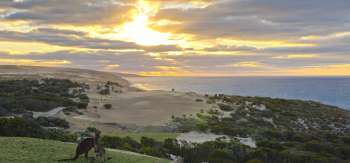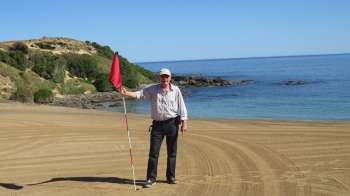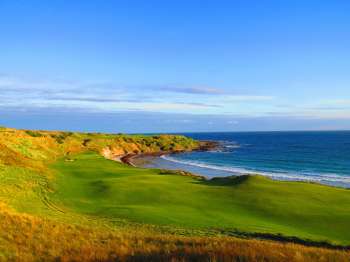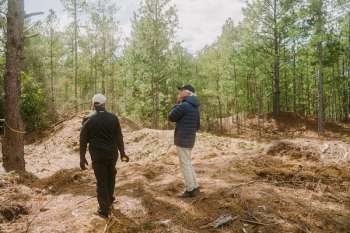Huntingdale Golf Course – Return of the Masters
In 2014 the Australian Masters tournament was held at The Metropolitan Golf Club in South Oakleigh for the very first time. Shooting for a hat trick of victories, defending champion Adam Scott came up short, finishing tied second with James Nitties and Josh Younger behind South Australian Nick Cullen. Last years final round produced one of the more dramatic finishes in recent Masters memory. Cullen’s superb par-saving bunker shot on the 72nd hole not only sealed his one-stroke victory; it became part of tournament folklore.
With respect to the various host venues over the past six years, most of our lasting Masters memories were made at the Huntingdale Golf Club, the tournament’s home for 30 years from inception through to 2008. This year marks the first return to Huntingdale since the rotation system started, and an opportunity for the club to draw a line under the ‘old’ Huntingdale and show off the ‘new’.
The original Masters course was designed by renowned British architect Charles H. Alison, who never actually visited Melbourne but provided the newly formed club with a set of plans that Sam Berriman could translate onto the ground. Berriman, a local Superintendent, designed a number of golf courses himself across Victoria and deserves great credit for taking the Alison plans and creating some interesting golf holes on what remains a fairly cramped and unexciting Sandbelt property.
Huntingdale was well regarded in Victorian golfing circles for many years, but achieved wider celebrity in 1979 when member David Inglis conceived of the Australian Masters Tournament, a blatant copy of the American major hosted by Augusta National every April. Like the US Masters, the Aussie version would be an invitational event played on the same course every year and for a big cheque and a garish dinner jacket. After some early struggles it became hugely popular on the Australasian Tour, thanks largely to the success of Greg Norman, who won six Gold Jackets between 1981 and 1990.
Somewhere between the glory days of Norman’s reign and the slide that took the event away from Huntingdale in 2008, the Aussie Masters lost its magic. The world’s best players stopped coming, prizemoney fell, scheduling regularly changed and the golf course itself was altered virtually beyond recognition. The major course changes began in the late 1990s, when Jack Newton, Graeme Grant and superintendent John Spencer redesigned several holes and added bumps and moguls through the fairways to assist with drainage. Their changes were not well received, and in some ways the club has been on the back foot ever since.
It is important to note here that the original Huntingdale layout had its flaws, and despite celebrity was a rung below the really outstanding courses on the Sandbelt. It had been ranked among the Top 15 in Australia by this magazine pre-changes, but has mostly languished down in the 30s ever since. The loss of the tournament and the prestige associated with owning one of the iconic golf courses in the country forced club management to get back to basics, and focus once more on providing its broad and diverse membership with an exceptional facility and exceptional overall club experience. To that end Huntingdale is very much back in business, with a spike in new members over the past few years and the youngest average membership age of any club on the Sandbelt.
In many ways not hosting the Masters annually has helped Huntingdale in its efforts to build a new and sustainable membership model. Major programs are much more difficult to facilitate when the tour takes over your facility each and every year. Prior to the start of the rotation system, for example, the club had plans to renovate its charming, but aging, weatherboard clubhouse. When the tournament moved a more ambitious approach was taken, and a brand new building erected at a cost of nearly $12 million. That new building opened last year and features a more modern façade, more flexible lounge and dining configurations and expansive views of the golf course from virtually all corners. Also part of the development was a new car park and an enlarged and modernised Pro Shop. The project has been a big hit with the membership and won a number of industry awards, including the Master Builders Association of Victoria’s “Excellence in Construction” prize earlier this year.
With Huntingdale now a more appealing place to be a member, one hopes the next step at board level will be to attempt to make the course itself a more appealing place to play golf. Some of the Newton, Grant and Spencer changes have been reversed in recent years, but inconsistency with the greens and bunkers and poor vegetation management remains a distraction. The club’s current golf course consultant is Englishman Dr Martin Hawtree, whose grandfather apparently worked with C.H. Alison back in Britain and has some connection to the design at Huntingdale. Hawtree has softened both the 14th and 17th greens and returned their contours to roughly how Alison intended. He has also helped the club reestablish indigenous ground vegetation in areas around the course.
Mercifully, the Hawtree masterplan hasn’t been entirely implemented and his pending retirement opens opportunities for the club to get ambitious and hire an accomplished, and sympathetic, design consultant to drive further change. Extracting the best holes possible out of the Alison routing means a mix of restoration and redesign, along with some significant tree removal and rebunkering.
None of these future design considerations will be of concern to participants in November’s Masters Tournament, who can expect the same high level of course conditioning as previous events staged here, as well as a modern, comfortable clubhouse facility to enjoy before and after play. The champion golfer will again be the one who handles Huntingdale’s slippery greens best, and not only finds a way to score on the narrow three-shot holes but to avoid disaster on the notoriously difficult closing stretch.
With the Australian Masters Tournament set to continue its rotating course policy for the foreseeable future, it will be interesting to see how the course plays this year in comparison to some of the recent host venues and also to watch for further change in the years ahead. Regardless of what competitors think of the new Huntingdale, this fine golf club is once again comfortable in its own skin, happy with its product and, hopefully, eager to push forward and make additional course improvements. That would make a return to the spiritual home of the Masters in a few years time something to celebrate.
Darius Oliver, Architecture Editor Australian Golf Digest Magazine
Back to NewsMore News
The Cliffs Kangaroo Island Announces Preview Play in early 2026
Major milestone for stunning new destination course with preview play available from January 2026
Who Really Designed Cape Wickham Links?
AGD ranks Cape Wickham #1 in Australia & interviews Duncan Andrews to get full story on course design
Cape Wickham Links – The Inside Design Story
Co-designer Darius Oliver reveals the truth behind the design of Australia’s premier modern golf course
Coore & Crenshaw to design new No. 11 Course at Pinehurst Resort
Pinehurst announces that famed design team will design its 11th course on the former Sandmines site




